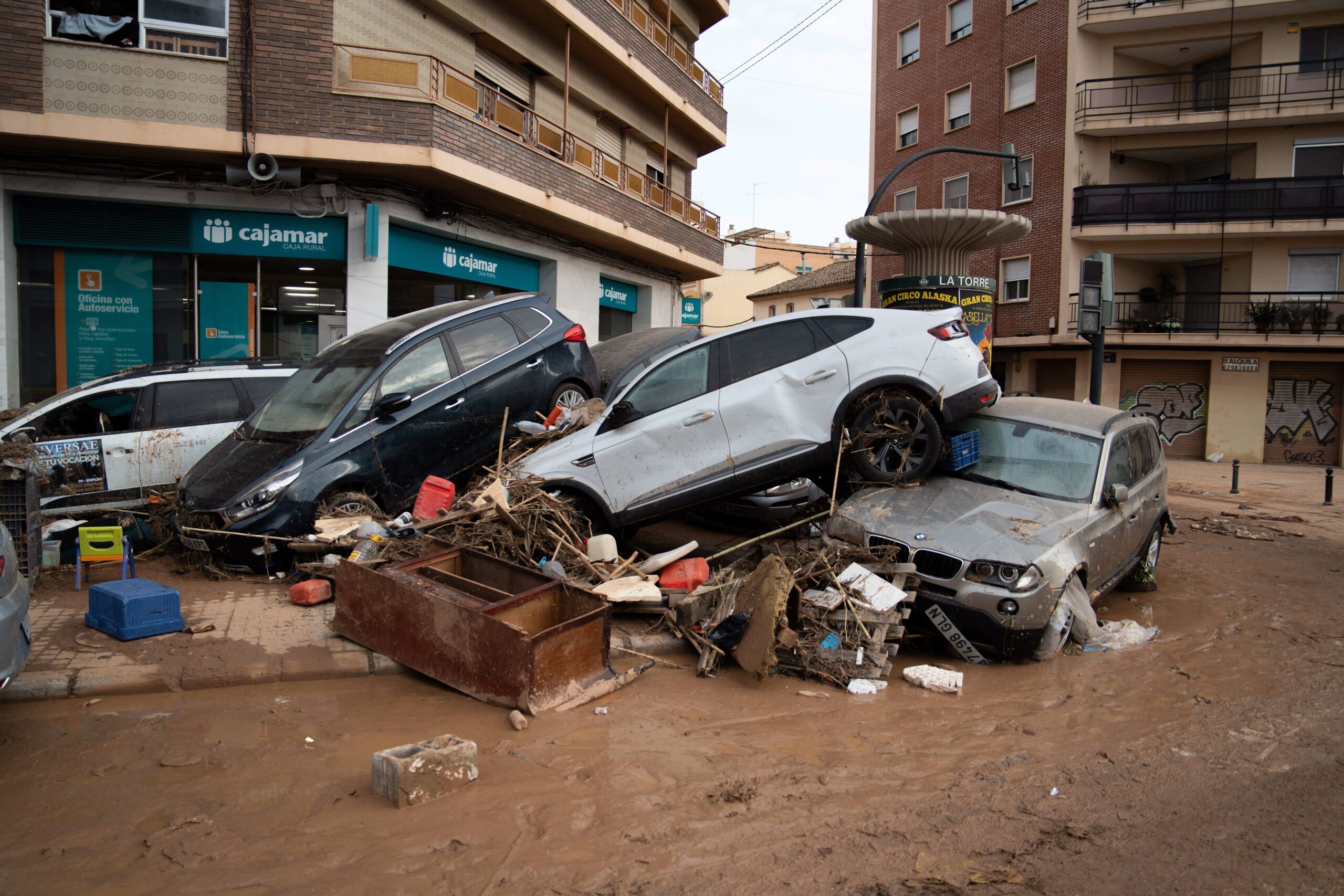WHEN a torrent of water ripped through Valencia last September, drowning streets, sweeping away cars and leaving a trail of destruction, another flood surged in parallel.
Social media, it turns out, was awash not just with images of swollen rivers and heroic rescues, but with lies, hoaxes and deliberate disinformation.
A new joint study by the universities of Valencia and Castellon has revealed the shocking scale of fake news that spread during those fateful days of the DANA storm – and why Spain remains dangerously vulnerable to the next digital deluge.
In the days after the skies opened, hashtags about the disaster trended across X (formerly Twitter), TikTok, Facebook and Telegram. While neighbours scrambled to save homes and emergency workers raced to pull survivors from flooded streets, another kind of frenzy was unfolding online.
False videos circulated claiming dams had burst. WhatsApp chains falsely reported that the drinking water supply was contaminated. Other posts recycled old footage from floods in Asia and South America, passing them off as scenes from Valencia.
“Moments of high uncertainty are the perfect breeding ground for disinformation,” said lead researcher Carles Pont of the University of Valencia. “In these situations, citizens are desperate for information, but the speed of social media means rumours spread faster than facts.”
The study analysed more than 200 widely shared posts across four platforms, filtering out the most viral examples of fake content. It found that disinformation fell into three main categories:
- Exaggerated claims of damage or risk – such as collapsing bridges or entire towns supposedly under water.
- Health and safety scares – like contaminated tap water or poisonous animals invading urban areas.
- Political blame games – with manipulated photos and memes accusing regional or national leaders of negligence.
What was most striking, the researchers noted, was how easily these falsehoods gained traction. Many were boosted not just by anonymous accounts but also by influencers with large followings, who sometimes shared without checking – and sometimes, it seems, knowing full well they were spreading nonsense.
Why do these lies spread so fast? According to the study, part of the answer lies in human psychology. In moments of crisis, people are wired to latch onto dramatic information, especially if it promises to explain the chaos around them.
But the other culprit is the technology itself. Social media algorithms reward engagement – and shocking, scary or angry content often triggers the most clicks, shares and comments.
“In a way, the platforms themselves act like accelerants,” said Pont. “They don’t distinguish between true and false. They only measure which posts keep people scrolling.”
READ MORE:
- Revealed: The number of emergency calls made about Valencia floods before warning was sent by regional government
- Six months on: Valencia still counting the cost of floods and leadership failures
- Spain’s Valencia floods tsar resigns in disgrace over allegations he FAKED his university degree
For residents already reeling from the storm, the fake news made things worse. Some neighbours stopped drinking tap water unnecessarily. Others avoided certain roads after reading rumours they had collapsed. In several cases, emergency hotlines were jammed with callers trying to verify wild stories they had seen online.
“All this disinformation puts extra pressure on emergency services, who are already stretched to the limit in these situations,” said co-author Ana Segovia of Castellon University.
Spain’s small but determined network of fact-checking organisations – including Maldita.es and Newtral – swung into action during the crisis. Their teams published corrections, debunked hoaxes and tried to push reliable information through the noise.
But their reach was limited. While their careful fact-checks circulated within certain audiences, they never achieved the viral momentum of the false posts they were battling.
“It’s like bringing a bucket of water to fight a wildfire,” admitted one fact-checker interviewed for the report.
The academics behind the study warn that the Valencia case should serve as a wake-up call for Spanish authorities and social media firms alike. Climate change is expected to make extreme weather events like DANAs more frequent and severe in Spain. Each one is likely to trigger a parallel surge in online disinformation.
They argue that citizens need better ‘digital literacy’ training to help them spot hoaxes in real time. Schools, they suggest, should teach children not just how to use social networks, but how to distrust them.
They also call on social media companies to step up. “We are not asking for censorship, but for responsibility,” said Pont. “Platforms must design systems that reduce the spread of dangerous falsehoods, especially during emergencies.”
The Spanish government has already been working on disaster readiness, from improving flood defences to strengthening the coordination of emergency services. But experts now say digital resilience should be part of that plan.
“When we talk about protecting communities, we must include protecting them from lies,” said Segovia. “Misinformation can kill indirectly – by causing panic, delaying rescues or undermining trust in the authorities.”
Perhaps the greatest damage, the researchers warn, is long-term. Each viral hoax erodes the public’s trust in real information sources. If people start doubting everything, they may ignore crucial warnings in future crises.
“This is the paradox,” Pont explained. “Disinformation makes people distrust institutions. But in an emergency, those institutions are the ones best placed to save lives.”
For the people of Valencia, the scars of the 2024 DANA are still raw. Families are rebuilding homes, small businesses are counting losses, and local councils are demanding more investment in defences.
But the digital flood revealed by this new study may be even harder to contain. As Spain braces for more extreme weather, the battle against fake news could prove just as important as the fight against rising waters.
Because when the next storm comes, the lies will come too. And unless Spain is ready, the damage they cause could spread just as fast as the flood itself.
Top 5 DANA hoaxes
From killer crocs to poisoned pipes, the storm showed that fake news can travel just as fast as floodwater – and cause almost as much chaos.
1. The bursting dam
Doctored videos claimed a major reservoir had collapsed, sending a deadly wall of water crashing into towns. Completely false – but it caused panic in low-lying areas.
2. Poisoned tap water
WhatsApp chains insisted the mains supply was contaminated. Families stopped drinking it, and supermarkets ran low on bottled water before officials debunked it.
3. Crocodiles in the streets
Clips of reptiles wandering flooded towns (actually filmed in Asia years earlier) were passed off as Valencia. Enough people believed it to clog police phone lines.
4. Collapsed motorways
Old footage of road sinkholes from South America was recycled as “Valencia right now”, convincing drivers to avoid safe routes.
5. Politicians to blame
Memes and fake screenshots accused local leaders of failing to act on warnings, some even suggesting sabotage. The images were digitally manipulated.
Click here to read more Valencia News from The Olive Press.








